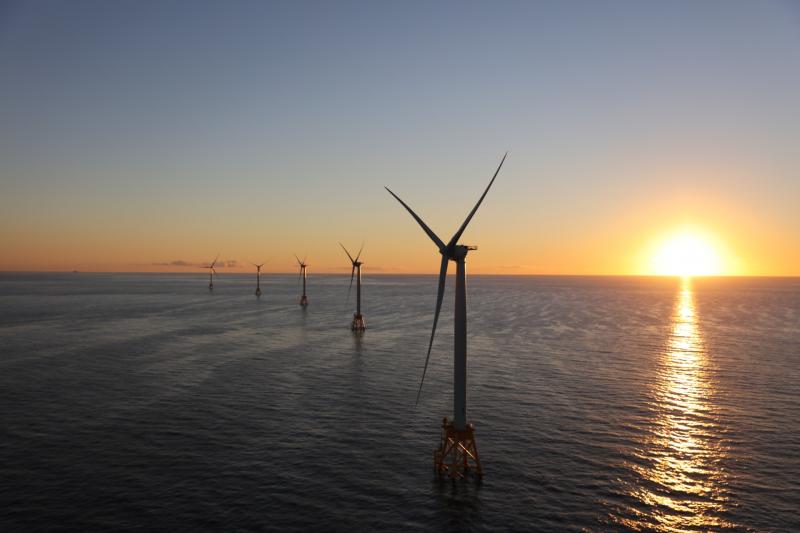Study: Tourism increased at nation’s first wind farm
A University of Rhode Island study released this summer suggests Block Island, home to the nation’s first offshore wind farm, has seen a boost in tourism since the end of the project’s construction in 2017. However, the report also says the reasons for and the sustainability of the increase are unknown.
Conducted by Corey Lang, URI associate professor of environmental economics, and doctoral student Andrew Carr-Harris, the study said many coastal communities relying on tourism to sustain their economy have worried that offshore wind farms would negatively affect tourism.
“It’s a common argument for pushback against siting offshore wind, but there isn’t a lot of empirical evidence about it one way or the other,” said Lang, in a press release when the study was released in May. “There have been surveys done assessing how tourists might feel about it, based on potential images of turbines in offshore waters, but those are hypothetical.”
According to the report, the researchers collected lodging data from Airbnb to examine trends in monthly revenues, occupancy rates and reservations from roughly two years before construction of the turbines to one year after construction was completed. They compared AirBnB rental trends in Block Island to those in nearby communities also dependent on summer vacation rentals – Narragansett, Westerly and Nantucket.
The report says, during July and August following construction of the turbines, Airbnb rentals in Block Island experienced, on average, a 19 percent increase in occupancy rates and a $3,490 increase in monthly revenue compared to those in Narragansett, Westerly and Nantucket.
The report said the data didn’t indicate the reason for the increase, but Lang and Carr-Harris suggest people were curious and wanted to see the wind farm for themselves. They said the curiosity factor may dissipate shortly, so the positive effects on vacation rentals may not persist. Also, they said, a small wind farm like Block Island may not generate the negative impressions that a much larger wind farm may generate in the future.
“If it’s driven by curiosity, then we might expect it to go back to normal,” said Land. “But if there are fundamental things that have changed, like better fishing, then it’s likely that some enhanced opportunities that come from renewable energy may be sustained. But that’s speculation.”
David Stevenson, director Caesar Rodney Institute Center for Energy Competitiveness, didn’t put much stock in the report. He said tourism is hitting in a big way for Block Island because the wind farm is the first by several years, he said.
“The project is apparently located on a quiet end of the island that may be dampening any negative impacts,” said Stevenson, who continues to question if it’s worth the risk to put the wind turbines planned off Delaware so close to shore. “Why not eliminate the risk and move further offshore.”
Stevenson said Orsted and US Wind may invest $5 billion to $6 billion to build the leases out. New leases, a little longer cable and slightly deeper water, might add a few tens of millions to the cost of the projects, he said, but by starting over, the extra costs would disappear in a lower overall price.
Chris Flood has been working for the Cape Gazette since early 2014. He currently covers Rehoboth Beach and Henlopen Acres, but has also covered Dewey Beach and the state government. He covers environmental stories, business stories and random stories on subjects he finds interesting, and he also writes a column called Choppin’ Wood that runs every other week. He’s a graduate of the University of Maine and the Landing School of Boat Building & Design.
























































